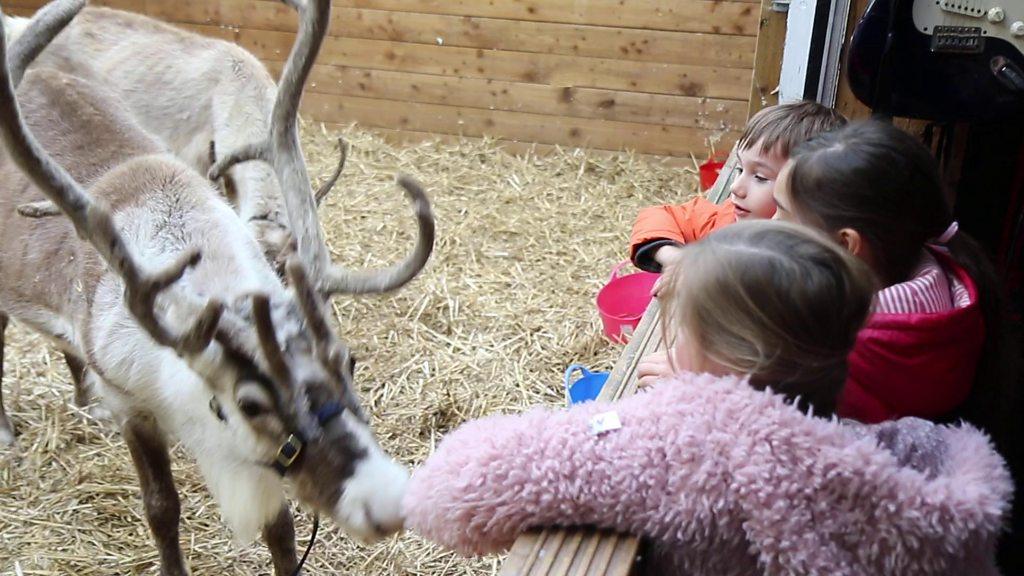Reindeer hunted by wolverines get safety app
- Published
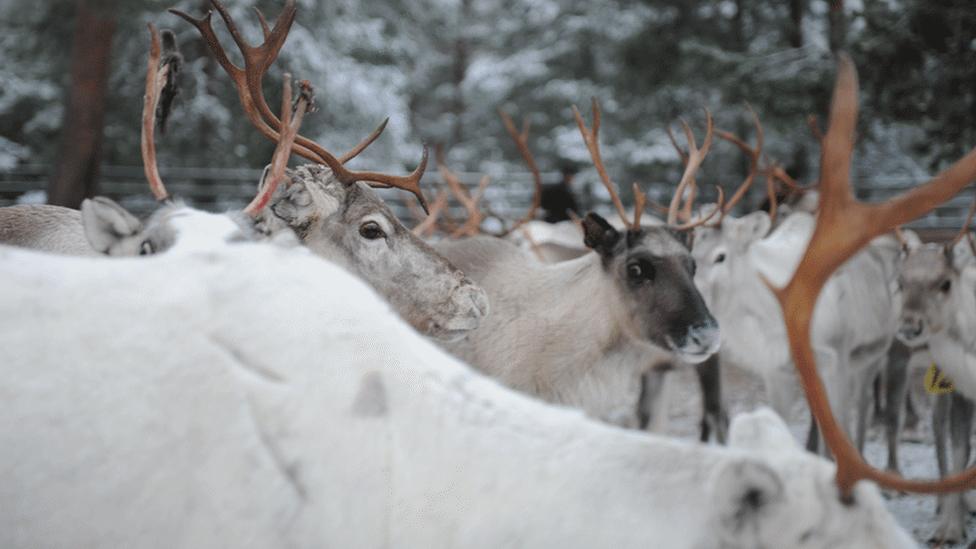
Reindeer herding is big business in Lapland
Reindeer, who fall prey to wolverines, wolves and lynx, are being fitted with sensors to protect them.
It makes it easier for herders to track the animals across the remote Lapland forests where they roam.
Sensors around the necks of the female reindeer are linked to the herders' smartphones, allowing them to rescue hurt animals more quickly and identify the cause of death for those killed.
Next year the team behind the system also plan to track the predators.
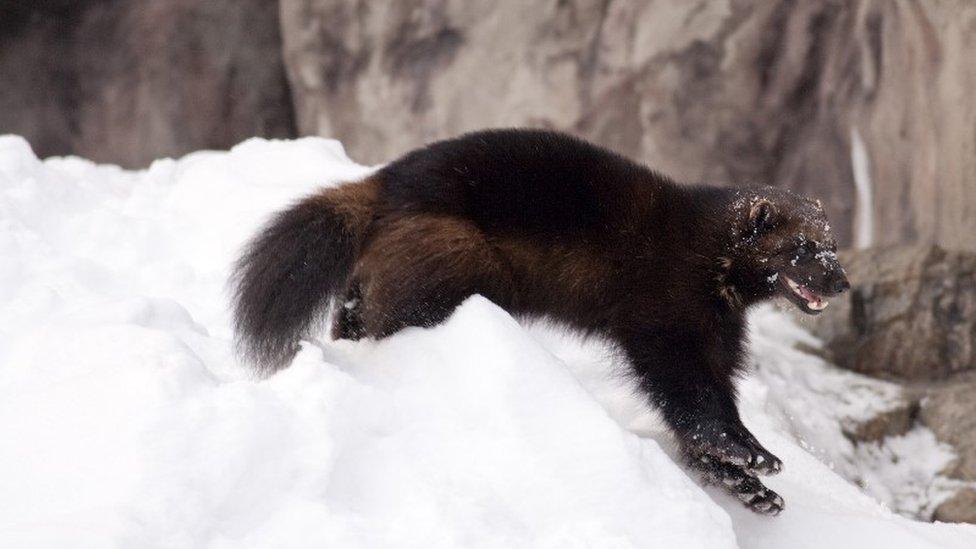
Reindeer predators include wolverines, lynx and wolves
Up to 10% of reindeer are lost each year to traffic accidents or by falling prey to bears, wolves and wolverines.
The worst predator for reindeer are lynx and there is a plan to attempt to track them in 2018 to identify when they are in close proximity to herds.
The reindeer sensors were attached to a selection of animals at the bi-annual reindeer round-up in September.
The herders discovered that it was best to put the trackers on alpha females to enable them to best locate the whole herd.

The sensors are currently quite bulky
The trackers use GPS satellite signals to determine the location of the reindeer, which is communicated to herders' smartphones via a low power, specially designed network which eliminates the need for each device to have a mobile subscription.
Matti Sarkela, head of the Finnish Reindeer Herders' Association, said: "We have high expectations of the internet of things," adding that the main challenge is "that today's sensors are still quite large".
"We need a sensor that lasts for a year, at a low cost, and with improved location technology - it can be hard to get good GPS signals in the high Arctic. We're working now on finding the best technology mix and getting the best sensor."
Reindeer refuses to 'go' for BBC reporter
The current sensors have been provided by internet of things firm Actility, while Finnish communications firm Digita began rolling out a special long-range network dubbed LoRaWAN last year to provide coverage to some of Lapland's most remote forests.
The mapping and visualisation software comes from Finnish start-up Mapitare, which began life creating offline-enabled maps for the emergency services.
Reindeer herding is big business in Lapland with up to 300,000 animals being managed each year, generating $25m (£19m) from meat, fur and antler products.
The reindeer spend the majority of their time in the wild, roaming where they choose which puts them at risk.
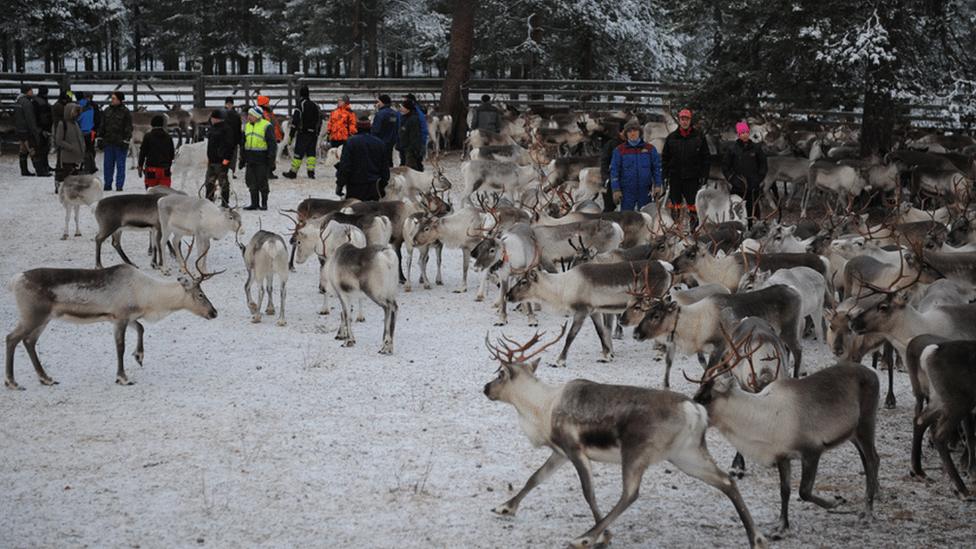
Reindeer herds are only brought together twice a year, meaning sensors have to have long battery life
Last month, 100 reindeer were killed by a train in a single incident in Norway.
Mr Sarkela said: "This tracking solution brings real benefits for the reindeer and for our herders.
"There are the obvious ones, like rescuing animals that are hurt or confirming the death of an animal to claim compensation, but by tracking all the time, we can gain insight into their behaviours and better care for them."
And, he added, technology could help make "the life of the herder easier", which in turn "makes it more appealing to the younger generation".
It is not the first time the association has turned to technology.
More than 10 years ago they began using GPS and three years ago launched a smartphone app named Porokello (reindeer bell) which allowed drivers to report reindeer near roads and send out warnings to others.
- Published5 December 2017
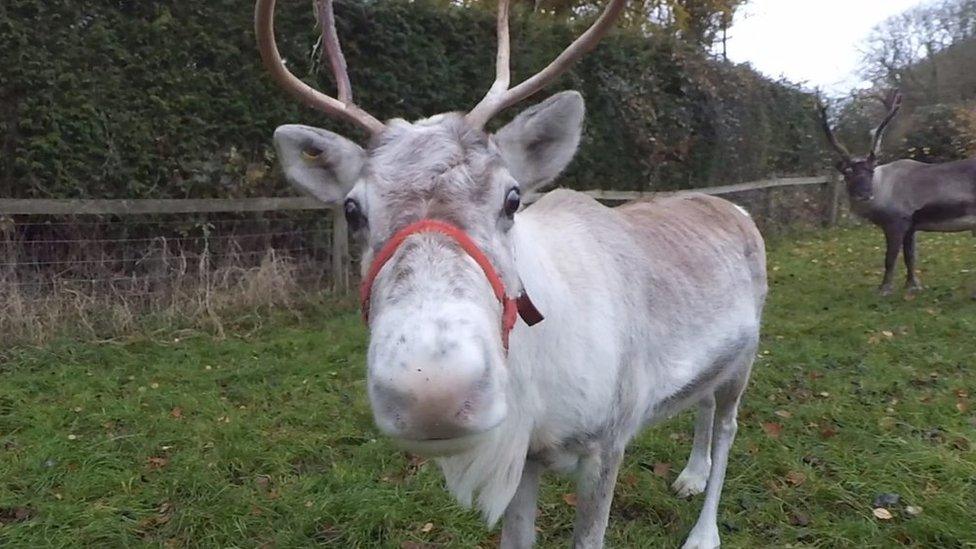
- Published24 November 2017
